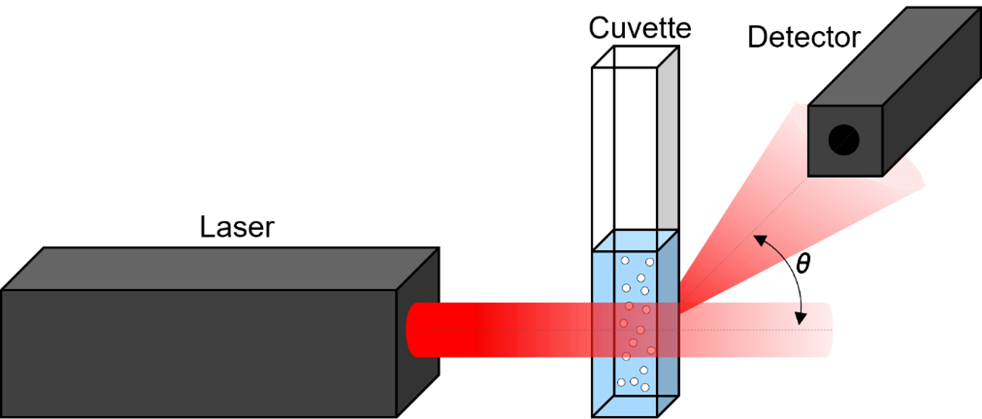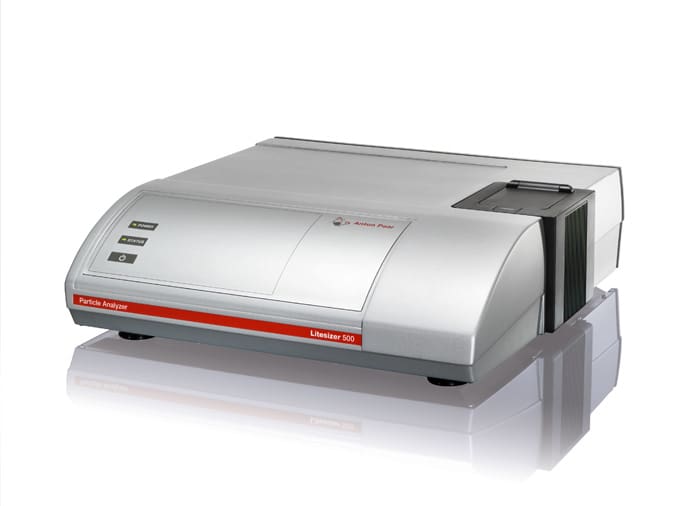Dynamic Light Scattering (DLS)
Dynamic light scattering is an indirect, high-throughput method for measuring the sizes – by hydrodynamic diameter (HDD) – of particles in a solution.
DLS is one of very few techniques able to measure true nanometer and in some cases sub-nanometer sized particles, all the way up to several microns with high sensitivity.
DLS is particularly well-suited to quickly obtain particle size distributions of colloidal dispersions or small-particle suspensions in a non-destructive, high-throughput, and highly reproducible manner while requiring minimal sample preparation and sample volumes.
Get Expert Analysis of Your Material
What is Dynamic Light Scattering?
Dynamic Light Scattering (DLS), also called Photon Correlation Spectroscopy (PCS) or Quasi-Elastic Light Scattering (QELS) is a fast and non-destructive technique used to measure the size and uniformity of particles suspended in a liquid.
DLS analysis works by measuring fluctuations in the pattern and intensity of laser light scattered off particles moving in Brownian motion and using the rate of these fluctuations to calculate the particle sizes.

Our Process
Sample Preparation
A small volume of particle-containing liquid is prepared and loaded into a cuvette. The sample must be stable, dilute, and within the detectable size range (~0.3 nm to 10 µm).
Laser Scattering
A laser is directed through the sample. Particles scatter the light as they move randomly (Brownian motion).
Signal Analysis
A detector captures fluctuations in scattered light. These are analyzed using an autocorrelation function to determine how quickly particles are moving.
Size Calculation
The particle movement is used to calculate size via the Stokes-Einstein equation. The system reports average size, size distribution, and uniformity.
DLS Instrument Used
Anton Paar Litesizer 500
The Litesizer 500 from Anton Paar is the only DLS-based particle analyzer able to perform a straightforward measurement of the sample’s refractive index at the exact wavelength and temperature of a given measurement. This ensures its maximal accuracy for particle size and zeta potential analysis.
- Particle Diameter Range: 0.3 nm to 10 µm

Strengths
- Fast, automated analysis = rapid results
- Accepts low sample concentrations
- Provides overall particle size distribution
- Works well with a wide range of particle sizes
- Non-destructive analysis
Limitations
- Does not provide particle shape information for irregular geometries
- Heavy particles can sometimes sediment, causing artifacts
- Bigger particles are higher-weighted in the raw intensity distribution
Unlock Precise Nanoparticle Insights
Get in touch to explore how our advanced DLS services can accelerate your materials research and product development
